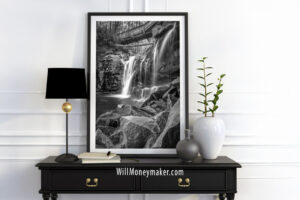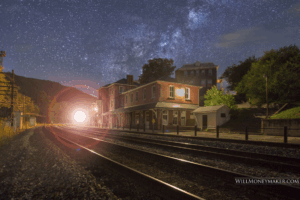We’ve all heard “big fish tales.” These are the stories that the storyteller happily recounts of an adventure he or she experienced. Sometimes, it is actually about a fish — and the fish grows notoriously larger and more difficult to reel in with each telling of the tale. But a big fish tale isn’t always about fishing. It could be any adventurous little snapshot of a person’s life, and, of course, the adventure isn’t necessarily exaggerated. The point, for the storyteller, is to share a moment of excitement with their listeners.
For photographers, our big fish tales are the challenging photographs that we take. They were those times when we stood in the midst of a blizzard with our cameras wrapped in a protective covering or the time we climbed a mountain just so we could take a handful of photographs from the peak. Sometimes the story is simpler: We only had one instant to take a photograph of a game-winning play, or traffic was much too busy on a particular road to stop and take a photograph, so we had our friend drive the car while we leaned out the window to take the image. We all have these big fish tales, these adventures we’ve gone on to create photographs, and because those moments were exciting for us because the challenge of even getting the photograph gave us such a sense of accomplishment, we enjoy sharing those stories with the viewers of our images.
These photographic adventures are, in a way, a lot like trophy hunting for photographers. Just like fishermen are after larger fish, we photographers often find ourselves with the mindset that, somehow, the difficulty in creating the photograph makes the end result better. After all, in other aspects of life, we’re taught that hard work reaps larger rewards.
But the truth is, the challenges you have to overcome in order to take a photograph don’t necessarily produce a better image. You could spend weeks hiking to a remote area of the world to photograph a rare flower, only to find that someone else replicated your image with a quick snapshot taken in the safety of a greenhouse. The challenge may be a point of pride for the person who took the photo, but to the people who look at the photo, it isn’t the “how you did it” that matters, but the “why you did it.”
Think about it this way: In many instances, your viewers won’t even know the “how” of an image. If they’re standing in a gallery, looking at an image that you created of birds in a snowstorm, they won’t be thinking about the hardships you endured in order to create that image. They’ll be thinking about the birds—how they must have felt to be captured in a snowstorm, or the sounds they might have made, the movements as they huddle up against the cold and ruffle their feathers. To the viewer, whether standing in a gallery, browsing your website, or wherever they are viewing the image, the photographer often doesn’t even enter into it. They have no idea what feats you pulled off in order to get that image, and it may not ever occur to them to think about it.
And in many cases, even if you were standing next to them, able to tell them how you shivered as you took the photo, how snow kept splotching your lens, and how you had to use crazy settings and creative methods to get the exposure just right, well, the brutal truth is, they may not care. Viewers are drawn into a photograph because the content of that photograph speaks to them, not because they care what the photographer had to do to create the image. With luck, they’ll remember your name so that they can view more of your work later on, but they’re unlikely to remember the “big fish tale” you told about making that image.
This is something that is important to remember if you find yourself needing to write about images that you have on display. Even if there is a good story behind taking an image, you don’t want viewers asking about technical details, like what lens you used or what settings were necessary. They shouldn’t be wondering how long it took you to walk from the car to the place you stood to take the image. Viewers should be ruminating about the image’s content. The experience of looking at a photograph should be an emotional experience, not an analytical one. Viewers are there for the meaning, and if they are asking about the technical side of things, then it’s a signal that they may not be drawn into the image’s content.
As a final note, I want to make it clear that none of this is to say we should give up and only take the easy photographs because, ultimately, the difficulty in creation doesn’t matter. Sometimes, the challenging situations that we place ourselves in are the only way to get a truly unique perspective on a subject. And, even if the story of a photograph’s creation doesn’t necessarily interest the viewer, the process of creation is still important to the photographer, and it always will be. When you’ve worked particularly hard to produce something, there comes with it a sense of accomplishment, a certain satisfaction that comes from that extra effort. I think it’s important that we rise to these challenges in artmaking, overcome them, and savor the satisfaction that comes once the job is finished.
So, definitely go the extra mile and keep creating challenging photographs. Just be mindful that the viewers aren’t coming to hear the tale about how the photograph came to be. They will, by default, experience images differently from the creators of those images. In the end, people who enjoy looking at art come to experience the results, not the challenges the artist overcame to produce those results.
Now go and enjoy the beauty of God’s creation through your lens.




